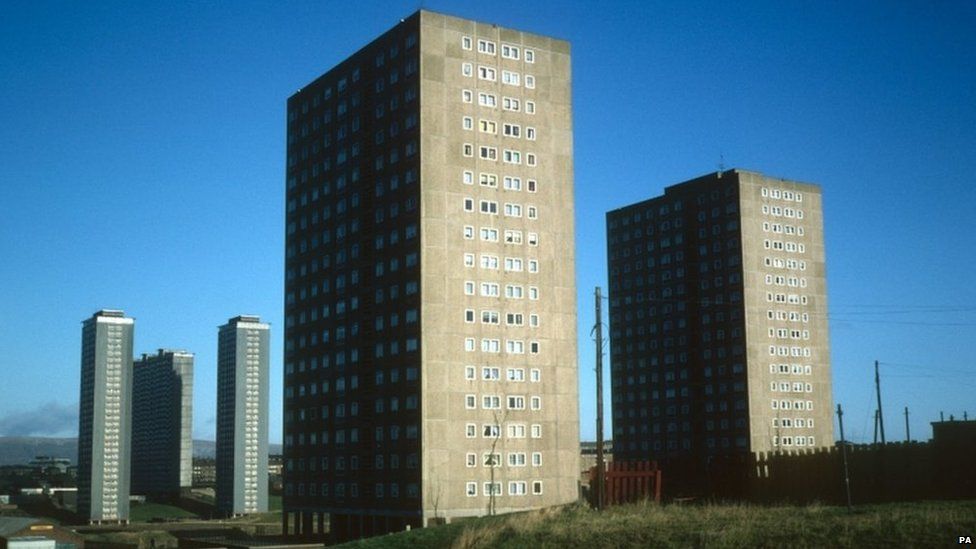Archive to record every tower block
- Published

Images of every tower block built in the UK are to be catalogued in a fully searchable digital archive.
The Tower Blocks - Our Blocks project has been described as a "Domesday Book" of the UK's post-war reconstruction.
It will include images of towers which have been demolished over the past 30 years, as well as those which are still standing.
It has been created by social and architectural historians from Edinburgh College of Art.
The project is to receive a £52,900 grant of Heritage Lottery funding.
This money will go towards digitising the 3,500 photographs, as well as supporting local outreach initiatives which the team hope will encourage high-rise residents to tell their stories.
Glasgow's Red Road flats and Gorbals housing schemes will be among the multi-storey housing projects on show in the publically accessible digital catalogue.
Other well know high rises to feature in the archive include the Everton flats in Liverpool, Birmingham's Chelmsley Wood, Manchester's Hulme redevelopment, and London estates such as Broadwater Farm, Thamesmead and Roehampton.
The project is due to be completed by late 2017.
Prof Miles Glendinning, head of the Scottish Centre for Conservation Studies at the college of art, said: "We hope this project will help contribute to the ongoing shift in public attitudes towards the post-war Modernist housing heritage, which is fast turning from an object of dislike and alienation into a force for potential community empowerment.
"Council tower blocks were once the most prominent and dramatic legacy of the post-1945 reconstruction drive, but mass demolitions over the past 35 years, still continuing today, have depleted this vast heritage, leaving it obscured or incomprehensible to the public at a time when popular interest in post-war Modernist heritage is sharply increasing."
Colin McLean, head of the Heritage Lottery Fund in Scotland, said: "Without archives, vast segments of our nation's history would be missing.
"As the high rise towers that have dominated many towns' and city's skylines begin to disappear, it is important for us to capture this heritage and give voice to the experiences of those who live in these flats and communities."
Glasgow 2014 chiefs faced criticism when they planned to demolish the Red Road flats as part of last summer's Commonwealth Games opening ceremony.
They eventually ditched the proposal to blow down five of the six remaining 1960s blocks live on television amid fears of a public protest.
Critics said it was insensitive to former residents and to the asylum seekers who still occupied the sixth block.
When they were built between 1964 and 1969, the Red Road flats were the highest in Europe at 292ft (89 metres).